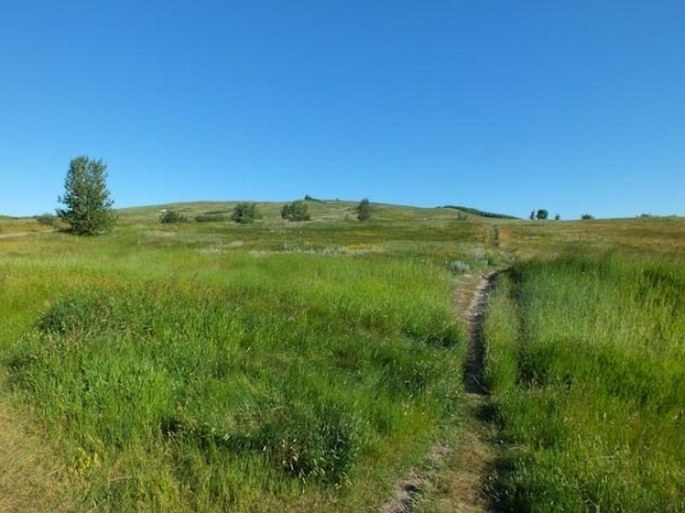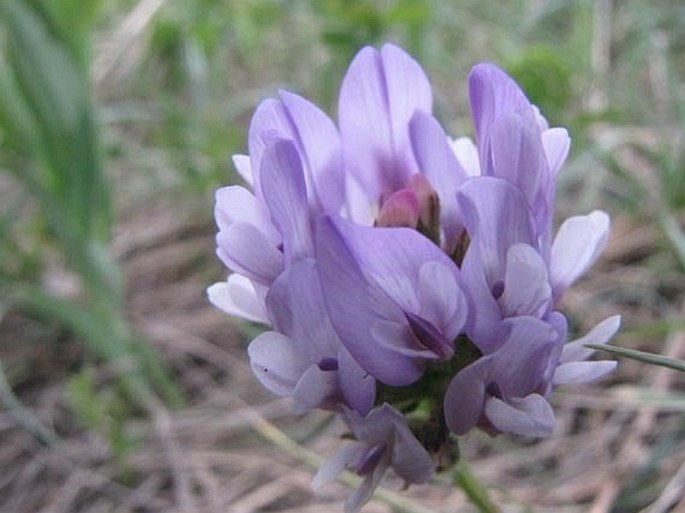Syn.: Astragalus goniatus Nutt., Astragalus dasyglottis Fisch. ex DC., Astragalus danicus var. dasyglottis (Fisch. ex DC.) B. Boivin, Astragalus hypoglottis Hook.
Family: Fabaceae Lindl.

Distribution: Found in most Canadian provinces and territories with exception of Maritimes and in US, from Minnesota to Illinois and westward to eastern Oregon, south to northern California and New Mexico. Also northeastern Asia (China – Xinjiang, Kazakhstan and Siberia – from Yakutia through Altay to Novosibirsk).
Ecology: Moist to dry meadows, fields, plains to montane, in elevations from 430 to 2000 m. Blooms from June to August.

Description: Perennial herb, stems 5–20 cm tall, reclining to erect, forming often large mats, from slender rhizomes. Leaves alternate, 4–10 cm long, pinnately divided into 11 to 23 leaflets, linear-oblong to elliptical, 0.5–2 cm long, sometimes notched at tips, stipules joined at base around stem. Inflorescence is a many flowered raceme, 2–3 cm long, flowers purple, rarely white, pea-like, about 18 mm long, calyx often with black hairs, keel often darker purple, shorter than wings. Fruit is a legume, stalkless, erect, hairy, oblong-ovoid, 1 cm long.


These images were taken in Canada, Alberta, Calgary, Nose Hill Park (summer 2013).


